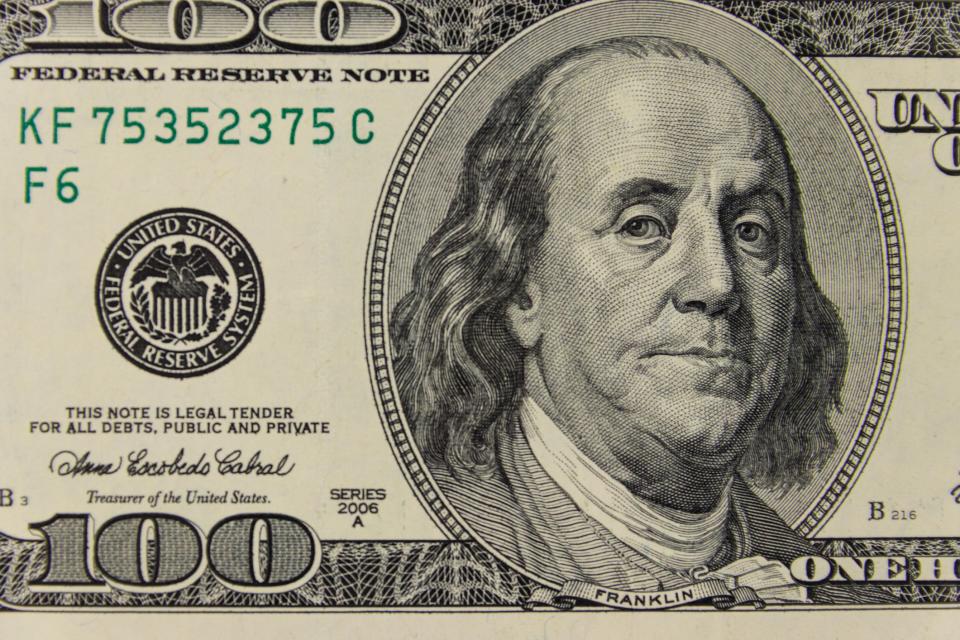7 Painless Ways to Save an Extra $100 a Month
When it comes to building savings, every little bit helps.

Image source: Getty Images.
As a general rule, it's a good idea to have enough money in the bank to cover three to six months of essential living expenses. That way you'll have cash reserves to tap the next time a financial emergency strikes. If your savings are nowhere close to that target, then you need to get your bank account into better shape.
You'll often hear that to save money, you need to make major sacrifices. But that's not necessarily true. If you've struggled to save in the past, your best bet may be to work on building cash reserves slowly but surely over time. In fact, socking away an extra $100 a month will go a long way toward helping you meet your savings goals. Here are a few easy ways to do that.
1. Dine out less often
A typical restaurant charges a 300% markup on the items it serves, so that $40 takeout order should only cost about $10 to prepare at home. If you're in the habit of dining out frequently, cutting back ever so slightly could free up some serious cash to save. So if you currently eat out three nights a week, try scaling back to twice a week and seeing what that does for your bank account.
2. Cut back on rideshares
If you're a city dweller, rideshares can be a convenient solution to your transportation needs, but $10 here and $15 there really adds up. If you tend to take a lot of rideshares, make a deal with yourself that you'll walk or take public transportation every other time you'd normally summon a private car. Chances are you'll be $100 richer by month's end.
3. Get a side gig
The beauty of getting a second job is that the money you earn from it won't be earmarked for existing expenses such as rent or food. As such, you should have no problem sticking all of it into savings. These days, you can turn a host of hobbies into a side gig, whether it's contributing to blogs, baking, crafting, taking photos, or caring for animals. Putting in a few hours on evenings or weekends could help you close out each month with an extra $100 in your pocket, all while spending that time doing something you actually enjoy.
4. Be smart about prescriptions
Many of us take medication on an ongoing basis, and if you manage your prescriptions strategically, you may find that they cost you a lot less. If there's a certain drug you take daily, see if you can order it in bulk. You'll often find that a three-month supply costs the same amount as a one-month refill, if not less. Also use generic medications whenever possible, as doing so could seriously slash your copays. Finally, don't be shy about requesting free samples. Doctors' offices get them all the time, and if it's a costly drug, a month's worth could easily save you from having to spend $100.
5. Refinance your existing debt
Most of us carry debt of some sort. Whether yours is of the credit card or student loan variety, if you're able to lower your interest rate on it substantially, you could potentially reduce your payments by $100 a month and bank the difference. If you owe money on a credit card, look into transferring your balance to a card with a more competitive rate. You could also try calling your original credit card company and asking for a better rate. Similarly, if your student loans have a high interest rate attached to them (which is likely the case if you borrowed privately), refinancing them might save you a hefty chunk of money each month.
6. Don't give in to impulse buys
Advertisers have gotten better than ever at tempting us to buy things we don't need. To avoid falling victim to impulse buys that thwart your savings efforts, institute a 24-hour rule for unplanned purchases. The next time you're tempted to buy something out of the blue, force yourself to wait a full 24 hours before going through with it. Chances are, you'll realize you don't need the item in question, and you can then take the money you would have spent on it and stick it in the bank instead.
7. Tackle your own home maintenance
If you own a home, you're probably aware that there's a lot of upkeep involved. And while you may not have the time or patience to do all of that work yourself, if you commit to tackling one task you'd normally outsource, you could easily have an extra $100 to work with at the end of each month. That could mean cleaning your house instead of hiring a maid service, mowing your own lawn instead of using a landscaping company, or handling minor repairs instead of calling in a contractor.
Saving money doesn't always require a major sacrifice. Any of the above adjustments could put an additional $100 a month in your pocket, so pick the one that sounds the least painful for you and commit to following it.
The Motley Fool owns and recommends MasterCard and Visa, and recommends American Express. We’re firm believers in the Golden Rule. If we wouldn’t recommend an offer to a close family member, we wouldn’t recommend it on The Ascent either. Our number one goal is helping people find the best offers to improve their finances. That is why editorial opinions are ours alone and have not been previously reviewed, approved, or endorsed by included advertisers. Editorial content from The Ascent is separate from The Motley Fool editorial content and is created by a different analyst team.

 Yahoo Finance
Yahoo Finance 